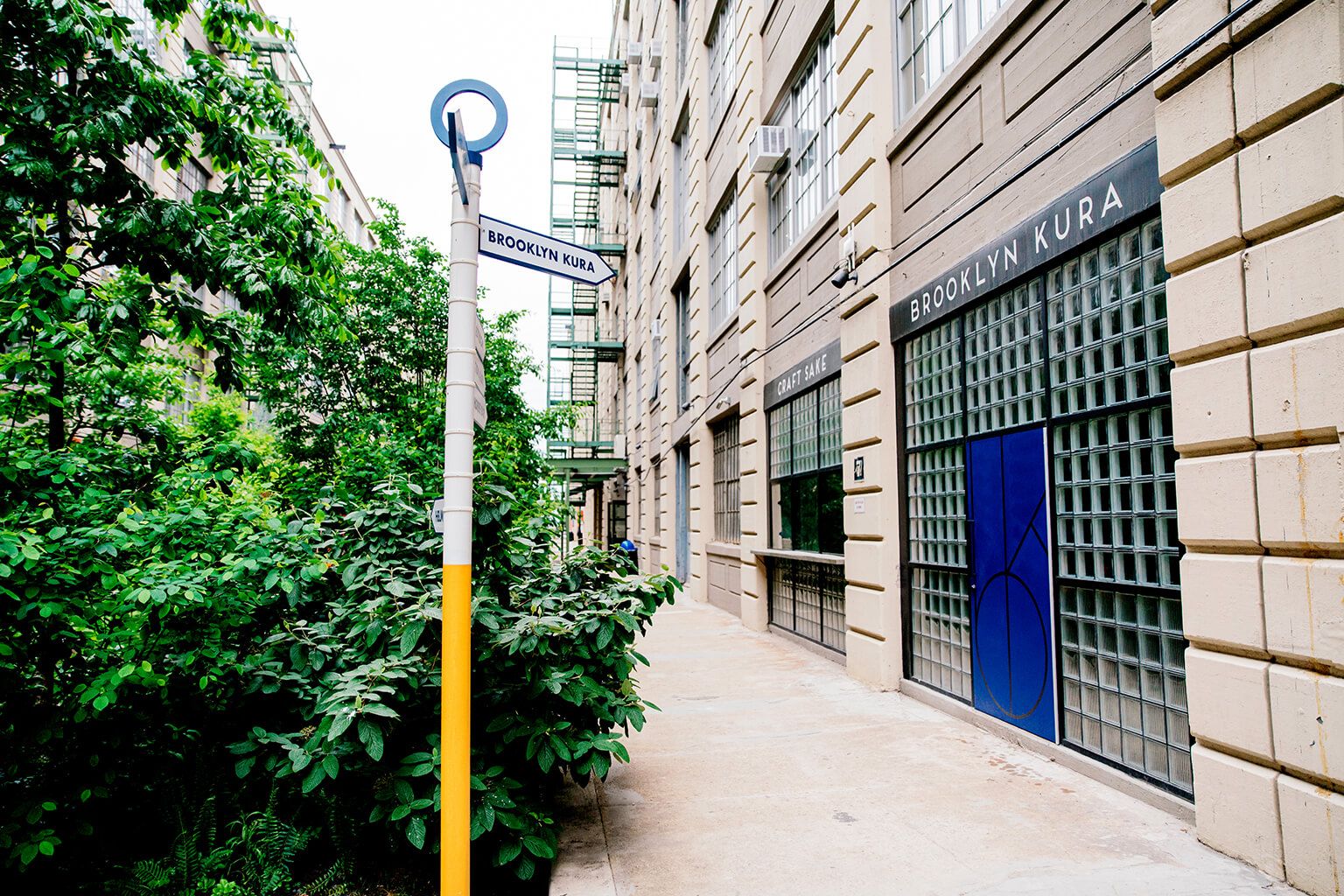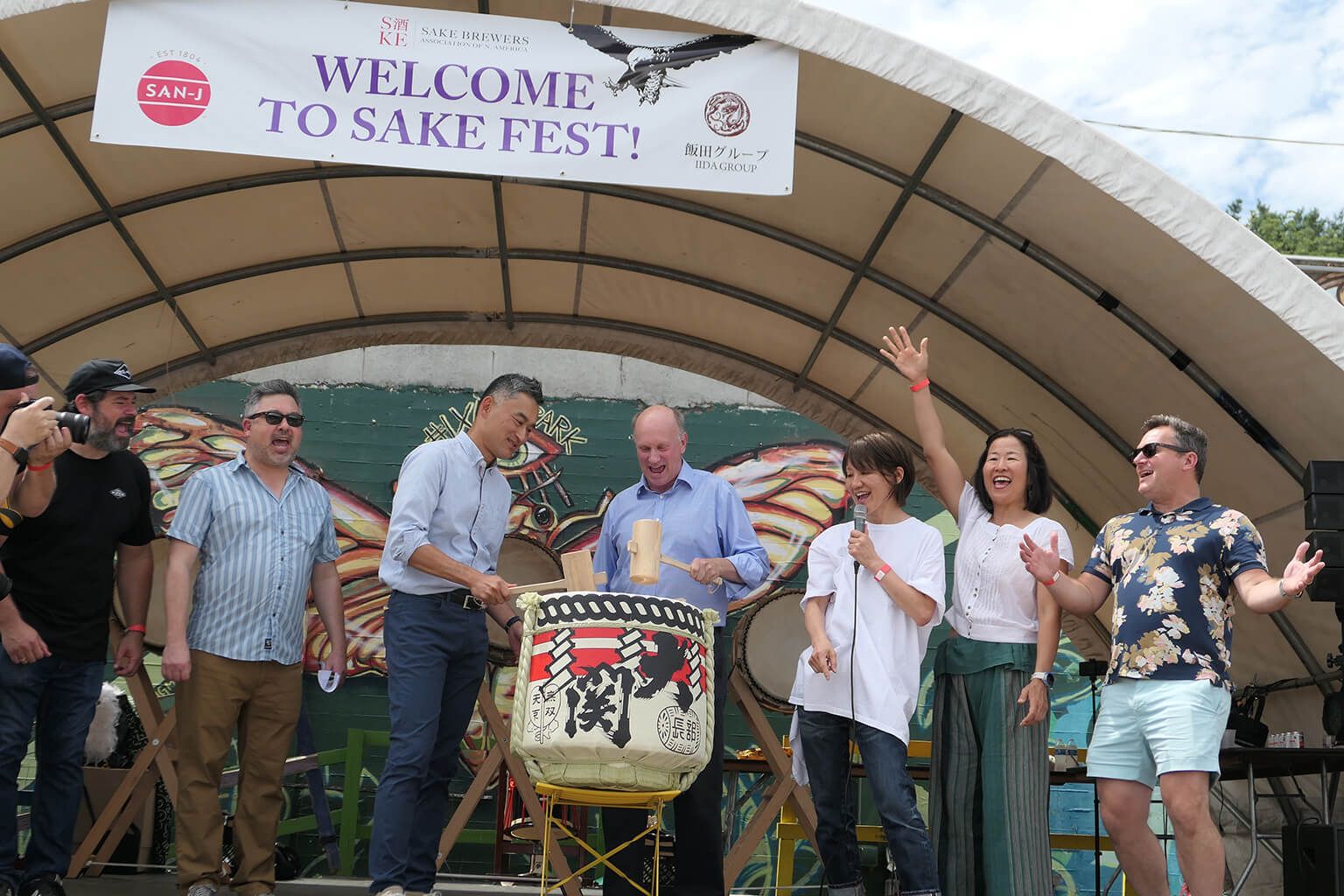In the American sake market, few brands hold the name recognition that Ozeki does. While the brewery is best known for producing the warm house sake of your local sushi joint, they make a variety of excellent products. You may also be surprised to learn that Ozeki sake has a long history, both in the U.S. and Japan. Let’s take a closer look at this storied company and some of the sake that they brew.
What is Ozeki? The history behind the brewery

Ozeki is one of the oldest breweries in Japan, but it wasn’t always called Ozeki. In 1711, a man named Chobee Osakaya founded the brewery called Manryo in the Nada district of Hyogo prefecture. Hyogo, and specifically Nada, is famous for the high quality rice and water available in the region. In 1884, the brewery changed its flagship brand name to Ozeki as an homage to the sport of sumo. At the time, grand champion sumo wrestlers would be awarded with the prestigious title “Ozeki.” This name change was to tell the public that the brewery also embodied the virtues of hard work and high skill required to earn recognition for their craft.
Ozeki wasn’t content with producing high quality, widely available sake; they wanted to continue to innovate. The first notable innovation was the release of “Cold Ozeki,” a sake intended to be drunk cold. In today’s world that’s exceedingly common, but in 1932 when Cold Ozeki hit the shelves, it was a hip new idea. “Kanzake,” or hot sake, was the norm. Ozeki’s forward thinking was rewarded as in-home refrigeration became widely available in the 1950s.
The advent of refrigeration in the home was not an easy time for many sake breweries, as canned beer started gaining traction. Sake was seen as a social beverage, a fact heavily influenced by the standard 1.8-liter bottles common to the ‘50s and ‘60s. Beer was much easier to enjoy alone. Ozeki was about to rock the industry — and the world — with their next innovation.

In 1964, coinciding with the Tokyo Olympics, Ozeki released the iconic One Cup Ozeki. The sleek glass jar that acted as cup and container in an easy to drink 180-milliliter size, with a vibrant blue and white label, was a smashing success among consumers. Throughout the years, Ozeki has tweaked and improved the quality of the glass, the lid and the materials used, but the sake inside and the shape have remained as steadfast and high quality as they were in the early days.
In 1979, Ozeki opened a brewery in Hollister, California, becoming the first Japanese brewery to produce fresh sake on U.S. soil. Much like Hyogo prefecture, the area in which the new brewery was founded has access to high-quality California rice, as well as pure water from the Sierra Nevada.
Where to buy Ozeki sake
Lucky for us, Ozeki isn’t hard to find! Quite often it can be found in your local grocery stores, Asian markets, and liquor store shelves. Some common bottles are Hana Awaka Sparkling Peach, easy to spot by its pink bottle, and Ozeki Nigori Cloudy Sake. Of course, you could save yourself a trip to the local market and check out the premium Ozeki bottles Tippsy has to offer down below!
Ozeki sake bottles: How to choose the right one
Like with any decision about what to buy, it’s important to have an understanding of what you’re looking for. There are many factors to take into account, and luckily Ozeki offers a broad range of products to cover all bases. First, ask yourself if you want something sweet or dry, and then decide if you like fruit forward flavors or earthy depth out of your sake. You could also look at the food you might want to drink this sake with; pairing sake with food is always fun, and one of the best ways to enjoy sake.
Ozeki “Karatamba”

Price: $
If you like a clean, dry palate akin to something like a crisp lager, then Ozeki “Karatamba” is likely right for you. Sitting at around 15% ABV, this bottle is about average for sake in terms of alcohol content. It’s also worth noting that while it’s a honjozo (sake with minimum 70% RPR), the rice is polished down to 60%, showcasing the light, dry and earthy side of Yamadanishiki rice at a wide range of temperatures.
With a light, refreshing body and soft herb and mineral notes, “Karatamba” is perfect for any season and is easy to pair with many dishes. I like to drink “Karatamba” chilled on a warm summer day, or hot to fight the cold of those long winter nights. When drinking it chilled, pair it with a light, clean fish dish; when enjoying it hot, match it with something a bit sturdier, like a stew or grilled meat.
Ozeki “Yamadanishiki”

Price: $
Ozeki “Yamadanishiki” is one of the more recognizable bottles in Ozeki’s lineup. Featuring the striking black kanji for Yamadanishiki on a white bottle, it’s easy to spot and fun to show off. Like “Karatamba,” this sake showcases the earthier side of its namesake rice, but in a more luscious and rich way. The fuller body and subtle pear notes give it a heartier structure to pair with richer foods like steak or teriyaki. The 14% ABV is also slightly lower than “Karatamba,” allowing the soft acidity of the pear notes to shine through. Ozeki “Yamadanishiki” shines at a wide range of temperatures, presenting more of that subtle pear note when cold, and earthier notes when warmed. Also like “Karatamba,” the rice used is polished down to 60% to really let the quality of the grain show itself.
Ozeki “Osakaya Chobei”

Price: $$
Where the two previous selections showcase Ozeki’s ability to draw out the earth tones of the high quality rice they utilize, the Ozeki “Osakaya Chobei” is a masterclass in drawing out the soft and subtle sweetness of the rice. By polishing the Yamadanishiki rice down to 50%, Ozeki has brought forward lush and delicate notes of lychee and melon. If you’re a wine drinker, the texture and flavor will be reminiscent of a light white. “Osakaya Chobei” also has an undercurrent of umami that further enhances its ephemeral aroma. I like this one at just below room temperature with a plate of sashimi in front of me. The delicate flavor and round body pairs well with the clean luxury of raw fish and mild pickles, and sitting at 15% ABV, it’s sturdy enough to pair with your food without being overshadowed.
Ozeki “Judan Jikomi”

Price: $$$$
If you like something sweet and a little flirty, Ozeki “Judan Jikomi” may be the bottle you’ve been looking for. The name “Judan Jikomi” refers to the intentional slowing of the brewing process — literally, a 10-step process instead of the usual “sandan jikomi” (three steps) — allowing the koji to do its work for a significantly longer period of time than most sake. The result of this slow dance between the koji and the Yamadanishiki rice, polished down to a 40% RPR, is a deeply rich, tantalizingly sweet junmai daiginjo. Each sip is bursting with juicy berries and warm vanilla, and a luxurious, velvety texture on the tongue. Much in the way a dessert wine rolls across the palate, Ozeki “Judan Jikomi” presents a lingering experience that can pair delightfully with desserts and bolder bites of sushi. The 16% ABV helps balance the sweet berry notes present in this bottle. Additionally, a bright, somewhat sneaky acidity lightens the back end, leaving your palate with a delightful sweetness you’ll be eager to return to.
Reliability in a bottle
Ozeki has a long history of consistency, reliability and high quality, not to mention innovation on a global scale. It’s one of the most readily available and varied brands of sake on the market. Whether you’re new to sake or happen to be a high ranking sumo wrestler looking for your next bottle, Ozeki has you covered. We encourage you to explore these four bottles at a range of temperatures with a range of foods, and then when you’re ready to explore deeper, check out some other great brands for beginners. Now, we’ve got some sumo practice to do and some delicious Ozeki sake to drink. Until next time, kampai!
References:
Ashcraft, Brian. “The Japanese Sake Bible.” Tuttle Publishing, 2020.
Ozeki Sake
https://ozekisake.com/history
https://ozekisake.com/mission-statement















